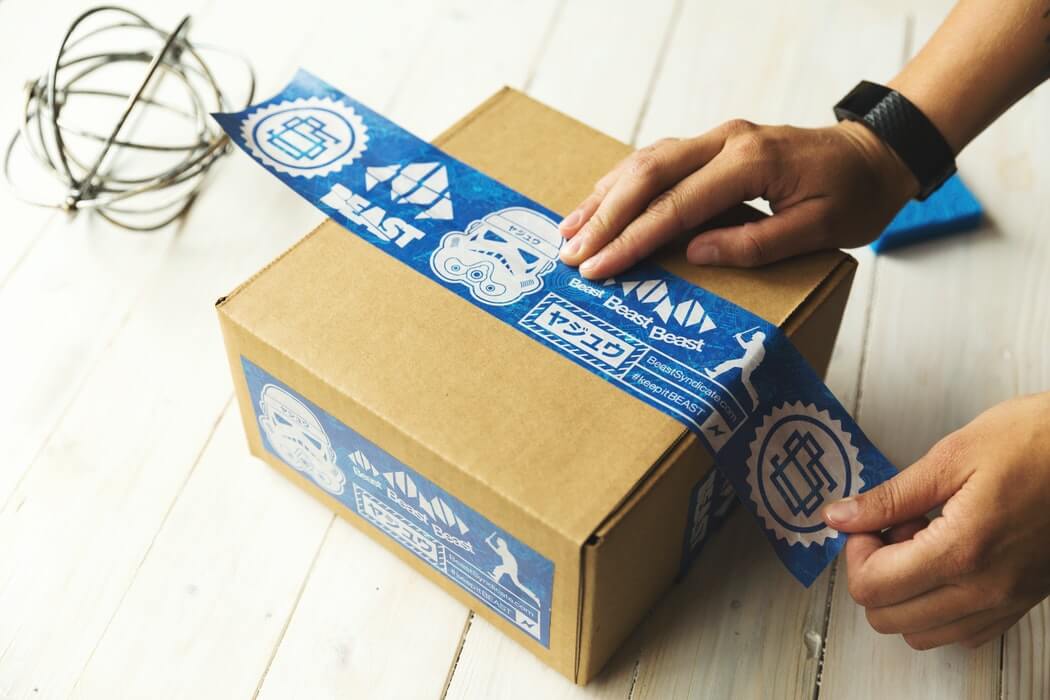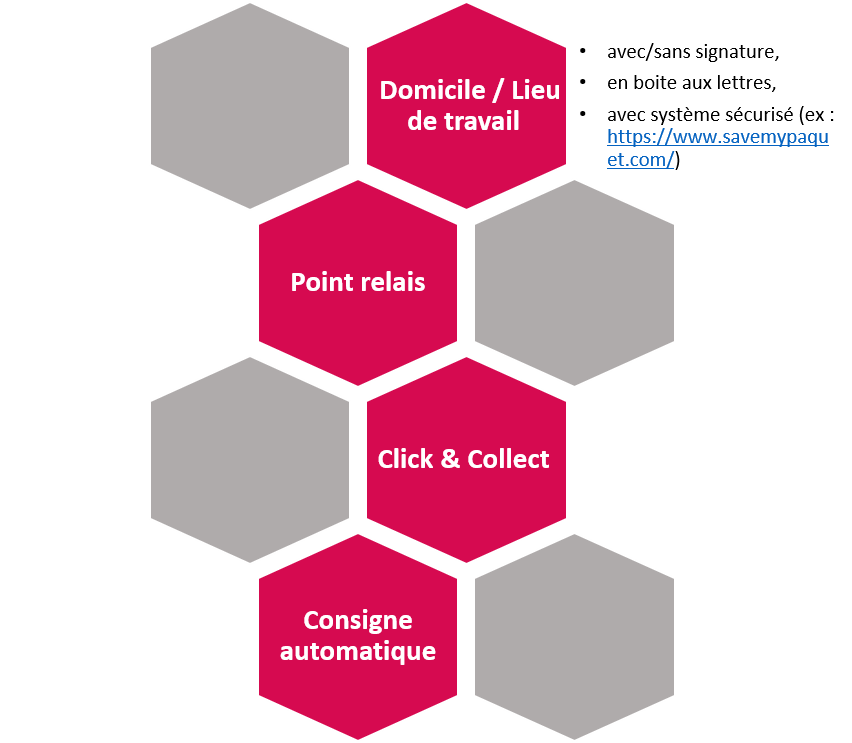What is last-mile logistics?
In logistics, the term "last mile" refers to thefinal stage in the process of delivering goods to the final destination chosen by the customer. This is a crucial stage in e-commerce logistics, having a major impact not only on the total cost of delivery, but also on GHG (greenhouse gas) emissions and customer satisfaction.
When did we start talking about last-mile logistics?
For the past 15 to 20 years, e-commerce has been experiencing strong growth, and delivery flows have exploded accordingly. And it's with B-to-C delivery that we're starting to talk about last-mile logistics.
Who are the players?
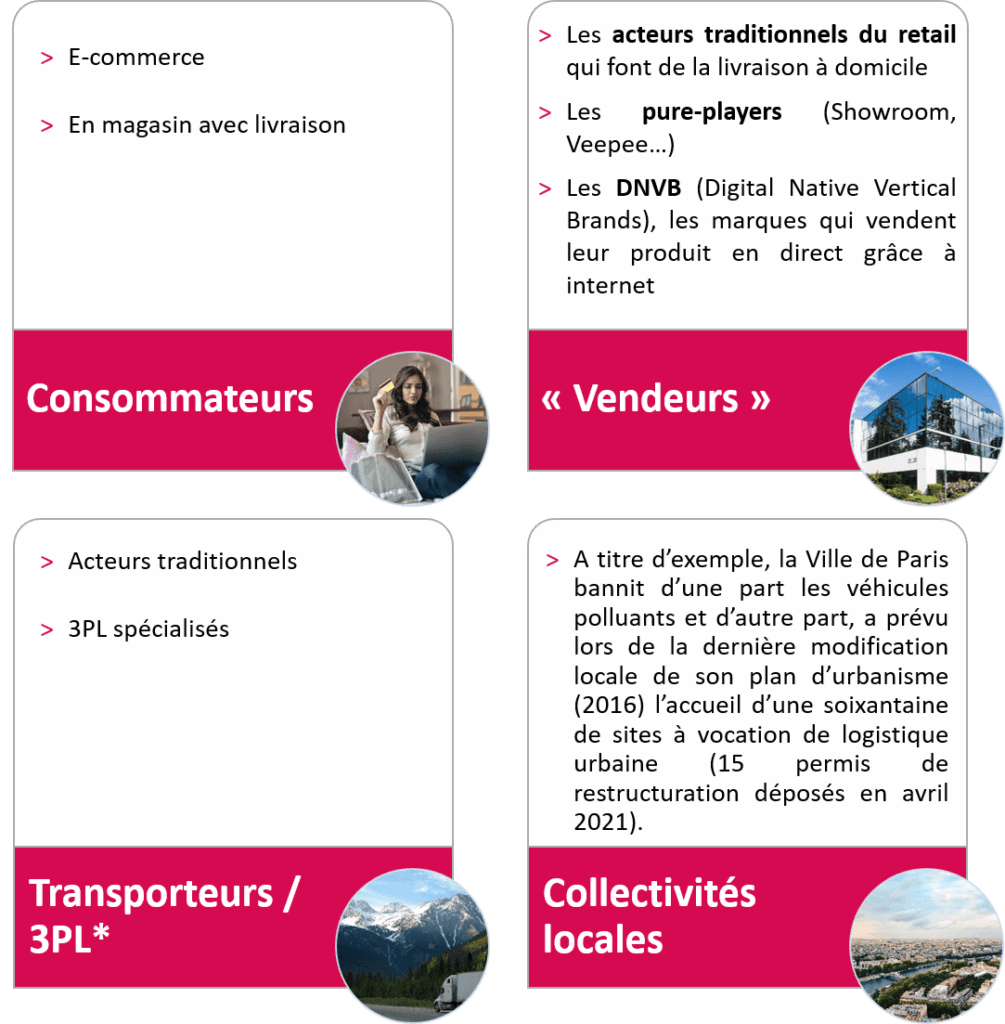
*(3rd Party Logistics)
What types of delivery are available?
Key figures
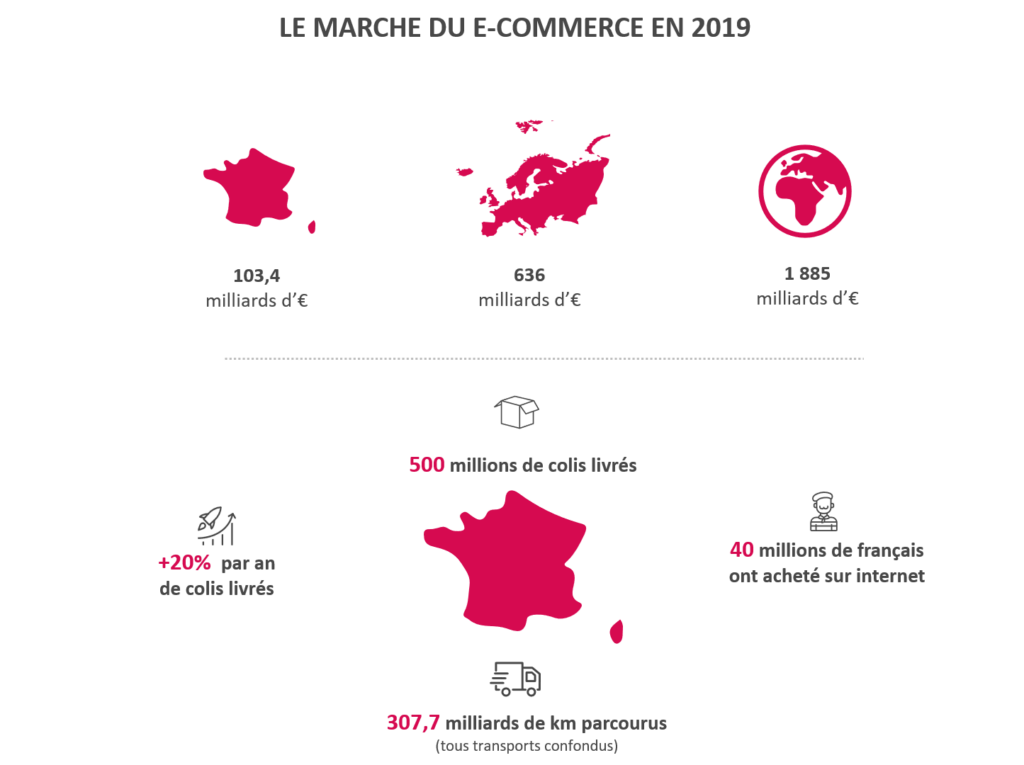
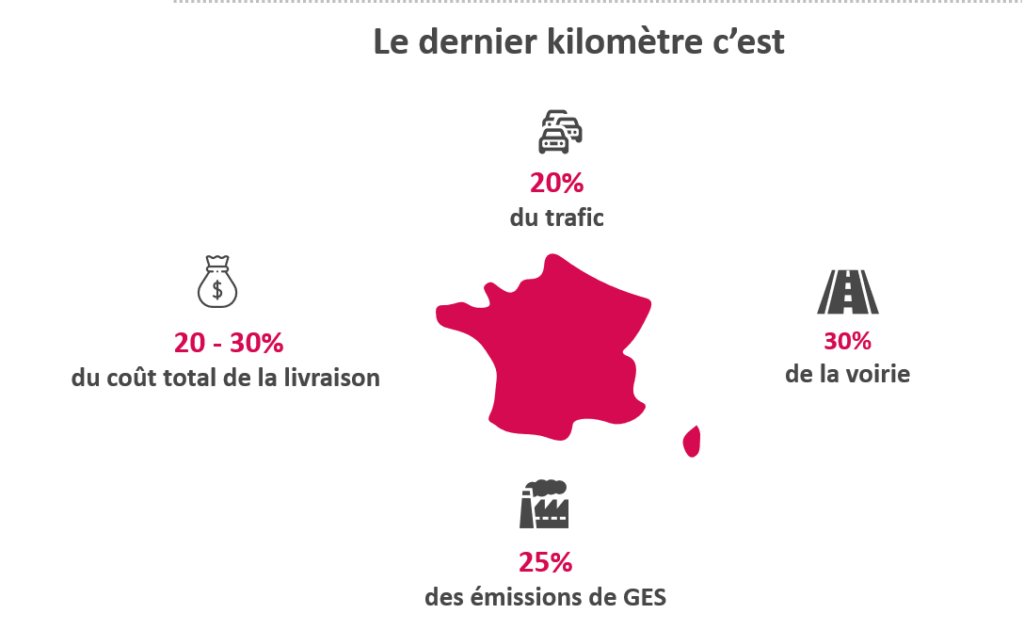
The Covid-19 crisis intensified the trend, with stores closing and a large number of purchases being made online. There's no doubt that this temporary inability to shop in stores has had a lasting impact on the habits of some consumers. We're going to take a closer look at what's at stake in this last mile, which is more relevant than ever.
The challenges for retailers
1. The customer experience
Consumer expectations and demands are growing when it comes to delivery. This is an essential aspect of the consumer experience when using e-commerce, or m-commerce (commerce via cell phone). Online shopping is often a time-saver for the consumer for a number of reasons, as it gives them access to a wide variety of products without having to visit several locations, or even travel. However, if delivery does not take place as advertised, the apparent time saving can turn into a significant loss of time for the consumer:
- If he has to go to his post office to collect his parcel > especially if he is unable to get there outside peak hours
- If he has to spend time on the phone with the customer service or logistics provider
In the act of buying online, the consumer experience is made up of 2 main aspects:
- The browsing experience on the website (or mobile application);
- The delivery experience.
For the consumer, a negative delivery experience is a reason not to renew a purchase with an e-retailer. This is all the more true when it's their first purchase with the e-retailer in question.
2. Responsibility
Often, when a problem arises during the delivery phase, after the package has been handed over to the carrier, the question of responsibility is perceived differently by the e-tailer and the customer.
- The e-retailer considers that the responsibility for delivery lies with the carrier > often, the e-retailer does not have the skills or resources to carry out delivery in-house, so he entrusts delivery to a 3PL (3rd Party Logistics), which then has control over the entire downstream delivery process.
- The customer considers that responsibility for delivery rests with the e-merchant > when a customer makes a purchase, they are contracting with the e-merchant from whom they have placed an order.
This means that e-tailers have a major stake in the choice of their service provider, in terms of :
- The level of service to be offered to the customer,
- Its ability to solve/deal with a delivery problem.
3. Image issues
Many French people are becoming aware of the need to reconsider their consumption habits. As a result, managing the last mile in a more virtuous way will increasingly become a differentiating factor for retailers in the eyes of their customers. Changing a company's last-mile management processes takes time, and is a transformation project in its own right. So retailers who invest now in better management of their last-mile delivery will have a significant competitive advantage in the future. It should be remembered, however, that despite growing awareness of environmental issues and GHG emissions, consumers will retain their habits and thus their delivery requirements for some time to come.
But how can retailers deal with this contradiction? One effective response could be to offer several delivery modes, including less virtuous modes, while displaying differentiating indicators for each delivery mode. These indicators could be a number of kilometers "saved" or a measure of the level of GHG emissions.
Social and environmental issues
Large urban areas are facing ever-greater traffic management challenges. With the proliferation of home deliveries and relay points, major cities are becoming increasingly saturated and congested. According to Rungis International, the last kilometer accounts for 20% of traffic, 30% of road use and 25% of greenhouse gas emissions. It is therefore essential for the urban planning of these major metropolises to :
- Setting standards ;
- Find alternatives for more efficient deliveries;
- Motivate environmentally and traffic-friendly delivery methods.
As mentioned above in the case of the city of Paris, more and more large urban areas are looking to the opening of numerous urban logistics centers as a way of simplifying deliveries, and reducing the number of delivery vehicles on the city's roads. Pooling the deliveries of several players via urban centers optimizes deliveries and brings the stock closer to the end customer, while integrating return collections is also possible with this model. Stuart, part of the La Poste group, offers this type of service to companies. There are also initiatives underway to take advantage of public transport in urban areas. At RATP, for example, there are plans for mixed transport (passenger/freight), or for freight trains to run between passenger trains ( TramFret initiative).
More and more cities are encouraging the use of more environmentally-neutral means of transport. Indeed, some major cities are subsidizing the purchase of bicycles, electric bikes and, above all, cargo bikes. The latter is increasingly used in last-mile urban logistics. They offer a number of advantages:
- Reducing noise pollution ;
- Reducing emissions ;
- Freeing up road space;
- Reduced delivery charges (up to 80%);
- Reduced delivery times.
Private initiatives are also multiplying to meet these challenges. One example is Sogestran, a shipping company with over 200 river vehicles, which is launching a river delivery service in Paris. From June onwards, 2 barges, each with a deck of at least 200 m², will be used. Each trip will be multi-site and multi-customer. This is the kind of initiative that will avoid a significant number of trucks inside Paris.
The last mile is one of the greatest challenges facing the supply chain today. As both a value-creation lever and a social issue, there is no doubt that it will remain one of the major preoccupations of all the players (detailed in the preamble) for the next 10 years.
---------
Sources :
- e-Logik network - Last mile: what are the issues and new challenges?
- Les Echos - Soon a hydrogen-powered vessel for river deliveries in Paris
- Les Echos - Logistics strengthens in Paris
- Rungis Marché International - "Time for digital" - Transport, last mile logistics
- Marketing definitions - Last mile
- Les Echos - Ecological transition: Ademe tries to kick-start the movement in SMEs
- FEVAD (The Federation of e-commerce and distance selling)
- Ministry of Transport website
- Adameo - Green Supply White Paper

